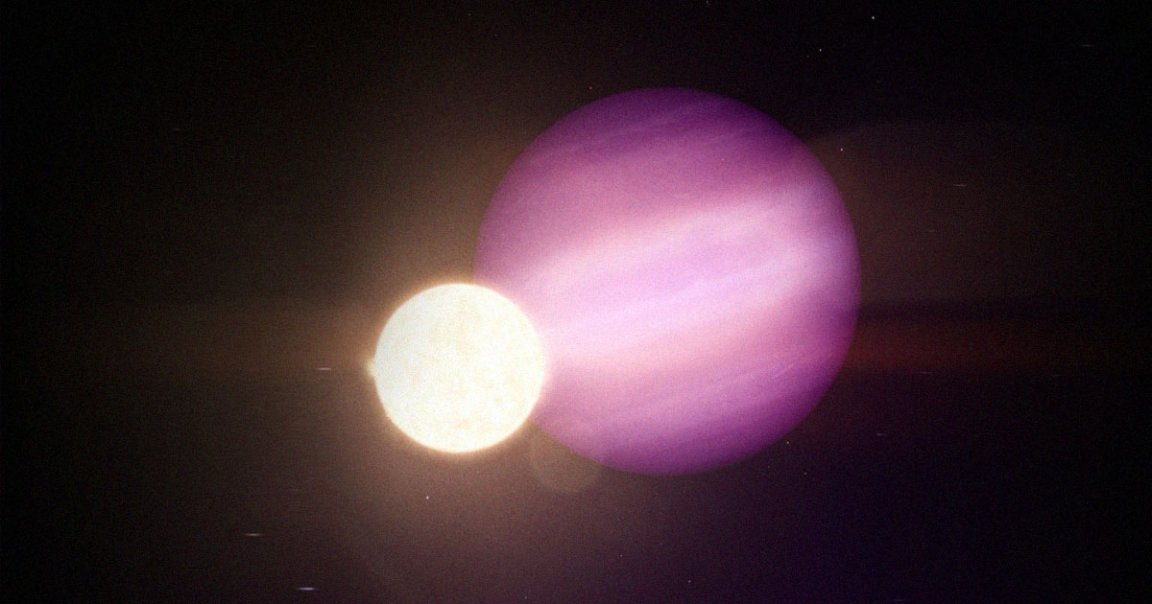
Dance Macabre
In an unusual discovery, using NASA’s James Webb Space Telescope, astronomers spotted two gas giant exoplanets — not unlike the ones found in our solar system — orbiting the remains of their respective white dwarf star parents. Unusual, because of the extreme forces involved.
White dwarfs are formed after a red giant expands and exhausts its nuclear fuel, shedding its outer layers to form a planetary nebula, a process that’s been observed to obliterate nearby planets. The result? An extremely dense core, with a mass of roughly the Sun’s, packed into the space of a single Earth.
But could planets orbiting such a star actually survive that kind of ordeal? Per the latest findings detailed in a new paper to be published in The Astrophysical Journal, first spotted by Science Alert: Yes, it’s possible.
“If confirmed, these would be the first directly imaged planets that are similar in both age and separation to the giant planets in our own solar system, and they would demonstrate that widely separated giant planets like Jupiter survive stellar evolution,” the international team of astronomers writes.
Deadly Orbit
Only thanks to the James Webb’s groundbreaking ability to spot incredibly dim and extremely far away objects were the scientists able to spot the mysterious pair of exoplanets.
The team led by Susan Mullally of the Space Telescope Science Institute (STScI) trained the space telescope on a pair of white dwarfs roughly 34 and 53 light-years from Earth respectively, and spotted what they believe to be two gas giant exoplanets.
The team estimates them to be anywhere from one to seven times the mass of Jupiter. Roughly speaking, their orbits are the equivalent of the distance between Saturn and the Sun and Neptune and the Sun, respectively.
In other words, at those distances, the findings suggest gas giants could survive their hot stars collapsing and transforming into a white dwarf.
But it’s still far too early to confirm such a hypothesis. As Science Alert points out, we’ve only discovered a handful of white dwarfs to date. However, we’ve observed closely orbiting planets being absorbed by their extremely dense remains.
“Future spectroscopy and multi-band imaging of these systems may be possible with JWST, which would improve the observational constraints on the physics and variety of cool giant planet models,” the researchers conclude in their paper.
More on white dwarfs: Bad News! A Rogue Star Will Not Crash Into Us, Scientists Say